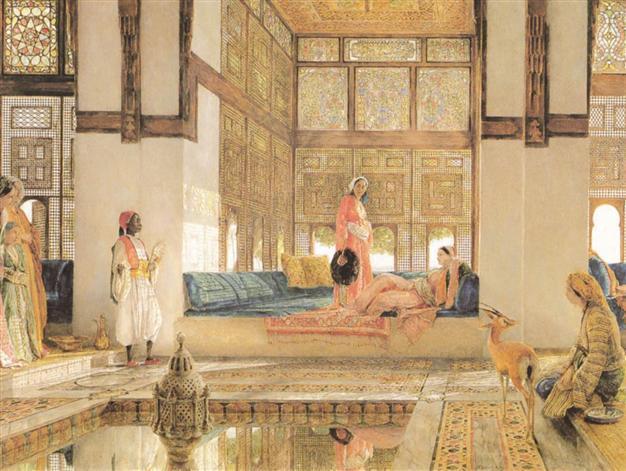Exhibition to reveal real life in Ottoman Seraglio
ISTANBUL

The exhibition, ‘Harem-i Hümayün,’ which will be made up of four sections, will display the life in the Seraglio with various miniatures, gravings and plans.
A new exhibition titled “Harem-i Hümayün” will open at the Topkapı Palace’s Has Ahırlar Exhibition Hall on June 13. The exhibition aims to correct misinformation about the
Ottoman seraglio in
Turkey and the world as well as reveal unknown details of the Seraglio (Harem).
The exhibition will be made up for four main sections. The first will feature the construction period of the seraglio with miniatures, gravures and plans while the second section will tell visitors about the guardians and servants of the seraglio, known as the eunuchs, as well as the organization of concubines.
The third section of the exhibition will feature the sultans’ women, the life and position of their children and other dynasty members. The exhibition’s last section will tell of daily life in seraglio through visuals and masterpieces.
Harem-i Hümayün was the place where women of the palace lived. Men were not allowed to enter this section and women living in this section had to obey a hierarchic order, which determined their rank and importance of degree in the Seraglio.
Under this hierarchy, the Sultan’s mother was known as Valide Sultan and his daughters as Sultana with various other names given to other women in the Harem. A woman who gave birth to a boy was called Haseki Sultan and all of the Sultan’s women were called Haseki.
Concubines living in the Harem were separated into three groups, the Acemi (unskilled), Kalfa (qualified) and Usta (skilled). Each woman received a salary from the Royal treasury and dressed in a means more elaborate than normal women’s apparel. The women of Seraglio were required to spend all of their time in the Harem and live according to the hierarchic order.
One of the most popular sections of Istanbul’s Topkapı Palace, the Seraglio has received even more attention due to “Muhteşem Yüzyıl” (Magnificent Century), which dramatizes the life of Süleyman the Magnificent and the intrigues in his seraglio.
But in the TV series, the scenes of sexuality in the Seraglio of the Ottoman Sultan Süleyman the Magnificent have raised the ire of members of the Ottoman dynasty, who accuse producers of misrepresenting and degrading the life of the sultans.
The exhibition, prepared by the Bilkent Cultural Initiative and the Topkapı Palace Directorate, will reveal all these details of the Seraglio to visitors with an attempt to correct misinformation.
